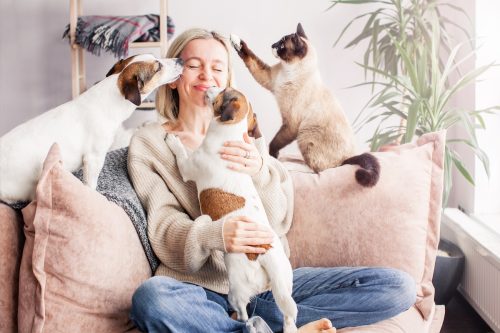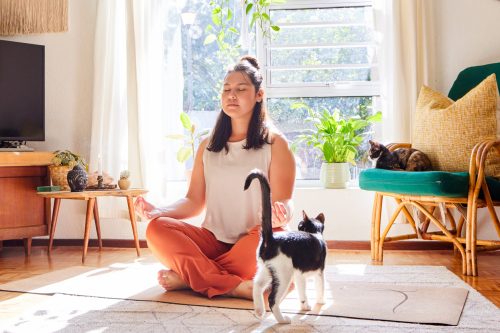Hidden Dangers Lurking in Your Indoor Air: What You Should Know

Don’t assume that the air you are breathing inside of your home is clean. “A number of pollutants and irritants can be present in our indoor air,” says Kenneth Mendez, president and chief executive officer of the Asthma and Allergy Foundation of America (AAFA). All of them, “can have a negative impact on indoor air quality,” he adds. Here are major hidden dangers lurking in your indoor air.

Volatile organic compounds (VOCs) are tiny molecules containing carbon which are primarily found in a gas form at room temperature. “Surprisingly, there can be two to five times more VOCs indoors than outdoors,” says Mendez. These gasses get emitted into the air from various products or processes. “Because of their gaseous state and their small size, VOCs can irritate your airways (as well as eyes and skin),” he adds.

Smoke and other pollutants can worsen the air quality in your home. They can emit into the air when you cook, light candles or fires, or use gas-fueled appliances, says Medez.

Mold can be an issue anywhere, but particularly is problematic in humid climates, “including common household areas that tend to stay wet and damp, such as bathrooms, laundry rooms, kitchens, and basements,” says Mendez. “Mold grows where there is moisture and a lack of air circulation.”

Pollen can enter your home through open windows and doors. “It also gets carried in on your shoes, clothing, and even your hair,” says Mendez. “It can settle on surfaces and be one component of dust found in your home.”

Animal dander and debris are very commonly found in homes. “Cat and dog allergies are common and these allergens are found in most homes,” says Mendez. Pet dander is easily carried on clothing and can spread even among the homes of those that don’t own pets. And, non-pet owners are also prone to insect and critter leftovers. “Mouse dander and cockroach debris are also very common in most homes and are known to trigger asthma,” he adds.

Dust mites may be the most common trigger of year-round allergies, and up to 30 percent of the population has a dust mite sensitivity. “Dust mite allergy can also trigger allergic asthma and atopic dermatitis (eczema),” says Mendez. You may not be able to completely rid your living space of dust mites, but you can take steps to reduce your exposure to them and subsequent allergic reactions. “Many of the symptoms and treatments for dust mite allergy also apply to other types of environmental allergies like pollen and mold,” he says.

While some irritants and allergens are visible (large colonies of mold), not all indoor air pollutants can be seen. “The best way to improve indoor air quality is to take active steps to reduce exposure to these common irritants and hidden dangers,” Mendez says.
RELATED: 11 Easy Things You Can Do to Slow Down Aging

Air cleaners that have received the asthma & allergy friendly® certification, have proven they can eliminate over 75 percent of allergenic particles in the air. “The certification standard requires that these particles are removed, not just redistributed throughout the room,” Mendez explains. You can also check out AAFA’s Healthier Home Checklist, which includes recommendations about making each room in your home a healthier space for people with asthma and allergies and the CERTIFIED asthma & allergy friendly® website to find out more about air filters, vacuum cleaners, bedding, and more that can help you improve your indoor air quality.